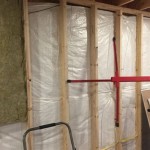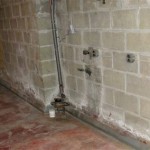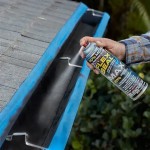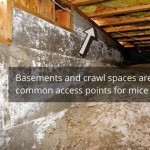Essential Aspects of How To Put Vapor Barrier In Basement
Installing a vapor barrier in your basement is a crucial step in preventing moisture and water damage to your home. By creating a barrier between the ground and your living space, you can effectively reduce the amount of moisture that seeps into your basement and protect your belongings and health.
Here are the essential aspects of how to put vapor barrier in basement:
1. Materials Selection
The first step is to choose the right type of vapor barrier. There are two main types: polyethylene and rubberized asphalt. Polyethylene is more affordable and easier to install, but rubberized asphalt is more durable and waterproof.
2. Surface Preparation
Before installing the vapor barrier, you need to prepare the surface. This involves cleaning the floor and walls to remove any dirt, dust, or debris. If there are any cracks or holes, you should seal them using appropriate materials like caulk or cement.
3. Installation
The next step is to install the vapor barrier. Start by rolling out the material on the floor, making sure there are no gaps or overlaps. Use a utility knife to cut the vapor barrier around any obstacles like pipes or walls.
Once the floor is covered, you can start installing the vapor barrier on the walls. Attach it to the walls using construction adhesive or heavy-duty tape. Start from the bottom and work your way up, ensuring there are no gaps between the sections.
4. Sealing
After the vapor barrier is installed, you need to seal it to the walls and floor. Use a vapor barrier tape to join the seams and overlaps of the material. It is essential to carefully seal all edges, corners, and penetrations to prevent any moisture from entering your basement.
5. Overlapping and Continuity
When installing the vapor barrier, ensure that it overlaps at least 6 inches on all seams and joints. This overlap helps prevent any gaps or leaks. Also, maintain continuity by running the vapor barrier up the walls until it meets the top of the foundation.
6. Final Touches
After sealing the vapor barrier, you should add a layer of gravel or sand on top of it. This layer provides drainage and helps prevent water accumulation on the vapor barrier. You can also add a layer of rigid insulation board for added protection and insulation.
By following these steps carefully, you can effectively put a vapor barrier in your basement and protect your home from moisture and water damage. As a homeowner, you should regularly monitor your vapor barrier for any tears or punctures and repair them promptly to maintain its effectiveness.

How Should I Finish An Existing Basement Wall Jlc Online

How To Install A Basement Vapor Barrier Hgtv

Do You Need A Vapor Barrier In Basement The Real Seal Llc

How To Install Insulation And Vapor Barrier

Vapor Barrier In Basement What Is It And How Does Work

How To Install A Waterproof Vapor Barrier Before Finishing Your Basement Walls Youtube

Bsd 103 Understanding Basements Buildingscience Com

Basement Vapor Barriers And Condensation Video Strickland Home Inspections

Are Vapor Retarders Necessary For Basement And Garage Floors

Basement Vapor Barrier Insulation Issues
Related Posts







